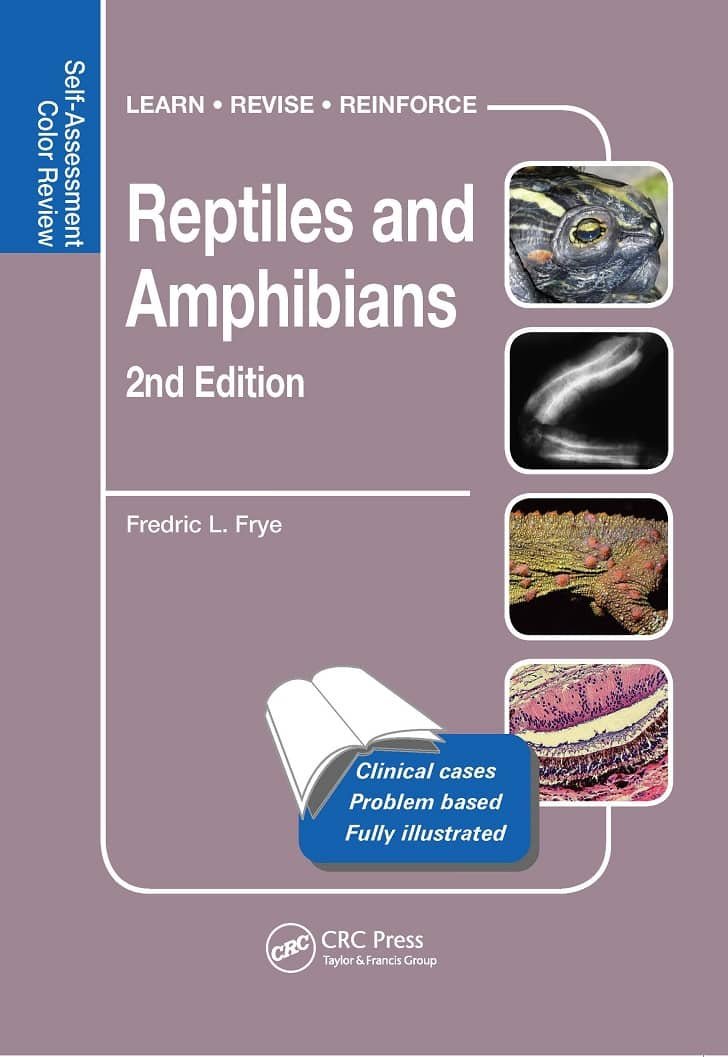Reptiles and Amphibians: Self-Assessment Color Review, 2nd Edition. The first edition of this book was written with a retrospective view and deep appreciation of comparative medicine, surgery and comparative pathology in its broadest sense.
Reptiles and Amphibians: Self-Assessment Color Review 2nd Edition

As the author of this second edition, permit me to give my assessment of where I perceive herpetological medicine and surgery has come and where I think it will continue to progress into the future.
Radiography, in all of its highly useful expressions including plain and contrast imaging, ultrasonography, magnetic resonance and three-dimensional computed tomographic scanning, nuclear isotope tracing, and so forth, is used for producing images as diagnostic tools. Physiological chemistry for analyzing blood, urine and other bodily fluids, and routine histological processing and, where indicated, highly specific immunohistochemically staining, are essential diagnostic laboratory techniques that aid in the precise characterization of neoplastic and other abnormal tissues. Doppler blood-flow detection and echo cardiology are advances in diagnostic medicine that find ready applications in herpetological medicine and surgery. A Field Guide to Western Reptiles and Amphibians
Often, the main obstacles to the application of some of these diagnostic modalities are access and cost. That stipulated, numerous academic and private practices now offer those diagnostic modalities. The advent of new and highly effective anesthetic agents, antibiotics, anti-inflammatory agents, and non-steroidal analgesic medications has brought the practice of herpetological medicine and surgery into the mainstream of veterinary medicine and surgery. When I graduated from veterinary school 50 years ago, many of these technologies and chemical agents were not available because they had not been invented! Commencing in the 1960s, a more realistic approach began to evolve, and as it did organized herpetological medicine and surgery became a reality. There were, however, sceptics who thought that treating reptiles and amphibians was a waste of their precious time and efforts. Those opinions did not prevail, and herpetological medicine and surgery eventually became a veterinary discipline that warranted formal recognition and board status – both of which it has justifiably earned.
Direct Link For Paid Membership: –
This Book is Available For Premium Members Only (Register Here)
Unlock 3000+ Veterinary eBooks or Go To Free Download
Direct Link For Free Membership: –
| File Size: | 108 MB | |
| Download Link: | Click Here | |
| Password: | PDFLibrary.Net (if Required) | |
